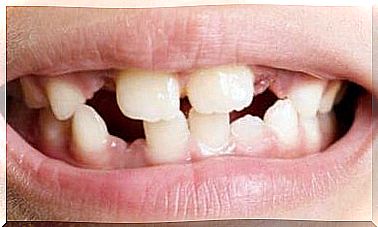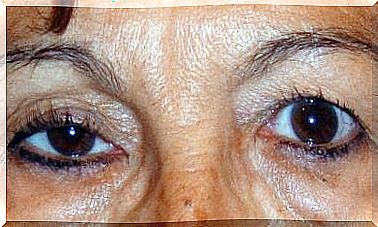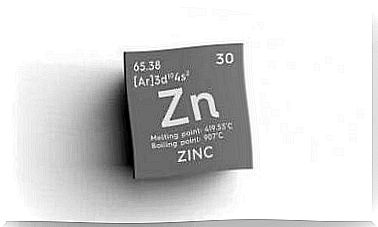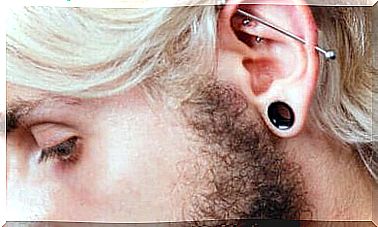Skin Changes During Pregnancy

Skin changes during pregnancy are caused by changes in hormonal activity and blood circulation. Often, however, the main concern of most pregnant women is the appearance of stretch marks. But in addition, spots, changes in skin color, acne and other skin problems can occur.
According to information published in the Journal of the American Academy of Dermatology , these changes are normal and do not endanger the mother or fetus.
However, in terms of aesthetics, they are important to many people and some prefer to seek solutions from a dermatologist. That is why we tell you all about it in this article.
Why do skin changes occur during pregnancy?
The placenta acts as a hormonal organ and causes an increase in adrenal and pituitary activity.
In addition to the function of the fetal endocrine glands, it causes an increase in corticosteroids, an accelerated metabolism and an increase in the levels of progesterone and estrogen, hormones responsible for changes in the skin during pregnancy.
Skin changes during pregnancy
The most common skin changes during pregnancy are benign and pose no risks beyond aesthetics.
However, as an article published in American Family Physician explains, there are pre-existing skin diseases, as well as specific pregnancy dermatoses that require vigilance because of the risks they pose.
In view of the above, it is therefore best to consult a doctor or dermatologist in case of skin abnormalities during pregnancy. Let’s take a closer look at some common skin changes.
Stretch marks
Most stretch marks or stretch marks occur in the abdominal area. They are most noticeable in the third trimester of pregnancy. They can be located on the breasts, hips, and buttocks. These stretch marks appear as pregnancy progresses and weight gains.
They can be pink or purple in color. After delivery, they will begin to fade and will no longer be as noticeable. However, in some cases, they don’t go away completely. That is why it is important to prevent or treat them at the right time.
Its appearance depends on skin type, elasticity and family history. Indications to reduce the chances of developing stretch marks include:
- Avoid excessive weight gain during pregnancy.
- Increase your daily application of moisturizers to promote elasticity.
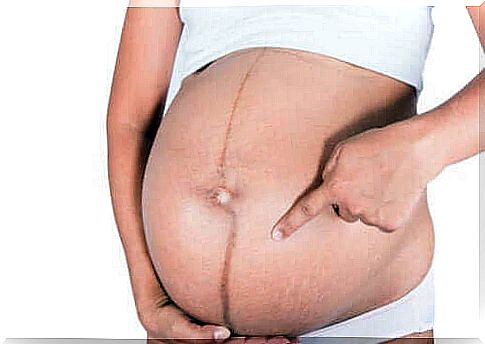
Skin tags or soft fibroids
These are small bobs, which appear to have a kind of stipe, sometimes elongated, brown or the color of the skin. They usually appear in the folds of the neck, armpits, or under the breasts, starting around the second trimester. However, most can disappear again during puerperium.
Hyperpigmentation
This is more common in women with dark skin and hair. The following areas are more intensely pigmented:
- The linea alba (located in the middle of the abdomen, vertically, from the pubic symphysis to a few centimeters above the navel).
- The periumbilical area.
- The external genitalia.
- The areolas. From the fifth month, an enlargement of the color of the mammary areola, also called the secondary areola, appears.
- Brown or yellowish patches can be seen on the forehead, cheeks, nose, or upper lip. This is called a pregnancy mask (also called chloasma or melasma).
To prevent these pigment changes, we recommend that you do not expose yourself to the sun for a long time, use sunblock with a high protection factor (SPF 50) and wear a hat and clothing that protects your skin. They may fade and improve in the months after delivery, but some women may still have some freckles.
All of these changes in pigmentation are the product of the hormonal change that takes place during pregnancy. This stimulates the production of melanin for a short time, which gives color to hair, skin and eyes.
In a study published in the International Journal of Dermatology , pigmentation changes were the most noticeable change in patients.
Some women may notice an increase in the size, number, and activity of their moles. They also tend to get darker and larger. If they start to bleed, we recommend that you see a dermatologist as soon as possible.
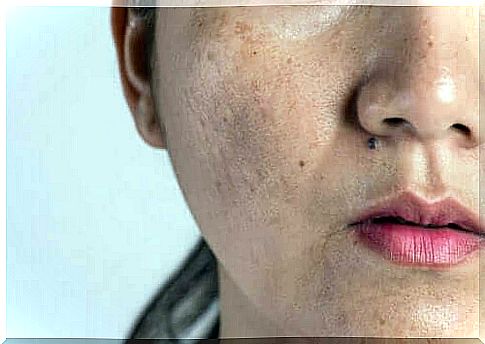
Vascular changes
During pregnancy, blood volume increases, vascular dilation occurs, capillary permeability increases and there is an altered vascular system. These circulatory changes are therefore responsible for the appearance of limb edema, varicosities, palmar erythema and telangiectasias.
To improve these symptoms, we recommend the following:
- Wear elastic stockings.
- Rest your legs in an elevated position.
- Avoid spending a lot of time standing.
- Have a healthy and balanced diet.
- Drink lots of water.
- Do moderate exercise.
Most of these skin changes disappear after about 6 months to a year. If they continue to bother you for longer, you can treat them with measures recommended by your dermatologist.
Skin Changes During Pregnancy: Acne
This condition often occurs during pregnancy because the sebaceous glands of the skin are stimulated, which increases sebum production. This can occur in any trimester of pregnancy and can be mild or severe.
cutis marmorata
This is a bluish, mottled discoloration of the skin that can occur during pregnancy. It mainly occurs on the legs, during exposure to cold. However, it usually disappears in the puerperium. However, if this does not happen, you should consult a dermatologist to rule out other causes.
Shiny skin
During pregnancy, the skin looks more shiny. This is due to two main factors. Firstly, the stimulation of the sebaceous glands, resulting in an increase in sebum production. On the other hand, the blood flow in the epithelium increases, which increases the oxygenation of the skin cells.
Skin care is important to treat skin changes during pregnancy
While most skin changes during pregnancy are considered normal, it is important to maintain a routine of skin care, including the use of special products. In addition, it is always wise to visit a dermatologist.



